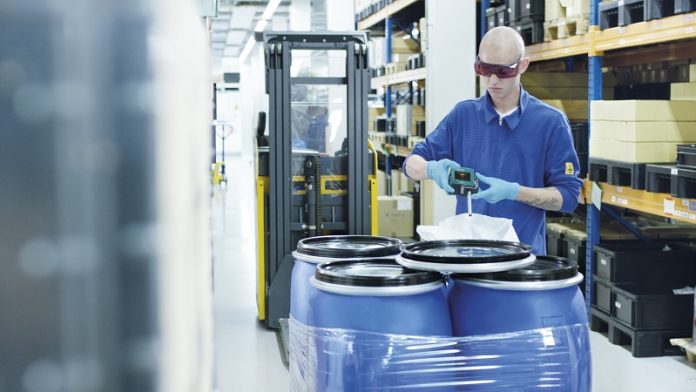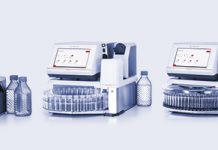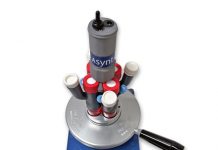Raw material identification and verification (RMID) is a complicated process for a very important reason: it confirms the quality of the raw materials used in the manufacture of products that you put on and in your body. The complexity of RMID spans the spectrum from analytical techniques and instruments to the testing process, then to the governmental norms and standards that regulate all aspects of RMID including system suitability, extent of sampling, method validation, electronic records, and many others.
With Mira P and Mira Cal P, Metrohm Raman simplifies RMID. Warehouse verification of incoming materials with mobile Raman in regulated industries involves performing RMID directly at the loading dock. Therefore, chemical analyses that historically would be performed in a laboratory by trained chemists can now be performed very quickly and with great success by nontechnical professionals.
Producers of handheld Raman instruments for RMID must provide suitable calibration and validation routines. Calibration of Mira P with the Calibrate/Verify Accessory (CVA) accomplishes instrument calibration as well as system and performance verification, then summarises these tests in the System Suitability Test (SST) report for Mira P. CVA ensures that Mira P performs as intended and that users can trust in the generated data quality. Upon completion of the SST, users are assured that all measurements are in accordance with agreed standards.
RMID methods must accommodate a number of factors to create the most accurate and robust solution for the task. Specific consideration must be given to:
The sampling strategy: how to collect the best quality data, given specific conditions
Sample presentation: including morphology, packaging, and chemical nature
Handheld Raman is recognised as a particularly well-suited technique for RMID, as it offers portable, onsite, no-contact analysis of solid and liquid samples.
From Training and Validation Set building and specific recommendations for collecting best quality spectra to dedicated software routines that automatically determine optimal model parameters, Mira P streamlines development of methods for RMID with handheld Raman.
Successful development of a method relies on the inclusion of spectra in libraries and training sets used for RMID. Careful planning in the design phase of the model leads to an easy data collection phase. This data can then be used to determine the best model parameters for robust method development. With Mira Cal P and ModelExpert, even non-technical users can implement accurate, effective RMID methods.
Implementation of handheld Raman in RMID, where the majority of materials testing is performed in the receiving area, is a logical step for such a powerful technique. It has become widespread due to some very real advantages.
Massive time savings: acquisition times of less than a minute, coupled with instant, obvious results, permits very high-throughput
Faster turnaround: delivers materials to production sooner
Reduced resources: less demand for laboratory and warehouse personnel and lab consumables, costs, and workloads
Guided Workflows: predefined workflows on Mira P make sampling simple and efficient
RMID is a complex process. Learn more about how handheld Raman from Metrohm can provide the simplest, most efficient and accurate RMID experience possible.
https://www.metrohm.com/en-gb/products-overview/spectroscopy/mira-handheld-raman-spectrometer/










